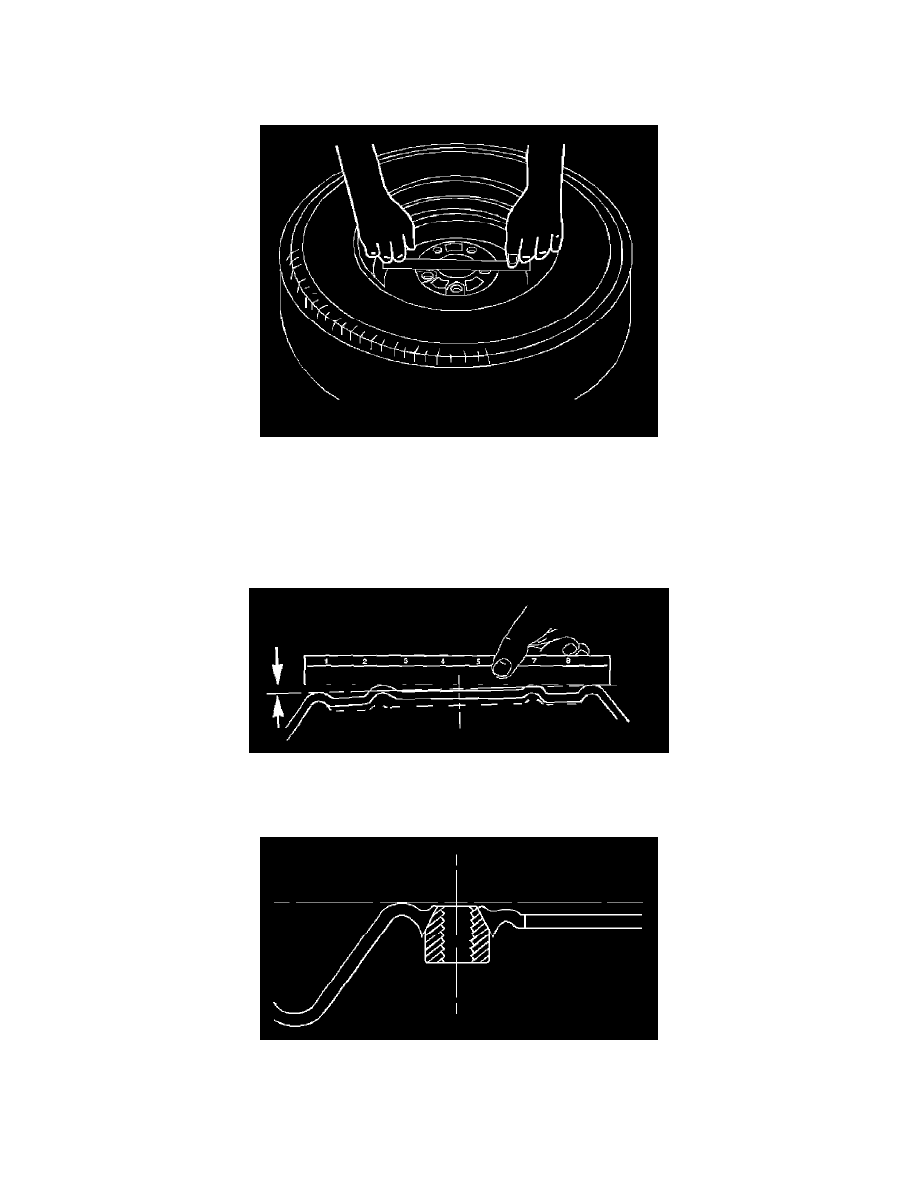XL-7 2WD V6-3.6L (2007)

Wheels: Testing and Inspection
Wheel Mounting Surface Check
Replace any wheels that are bent or dented, or have excessive lateral or radial runout. Wheels with runout greater than specified may cause
objectionable vibrations.
1. Thoroughly clean the wheel mounting surface with a clean shop towel and denatured alcohol, or equivalent.
2. Use a straight edge 203-229 mm (8-9 in) long. Place the straight edge on the wheel inboard mounting surface. Try to rock the straight edge up and
down within the mounting surface.
3. For aluminum flat-mount wheels, repeat the procedure in step 2 on at least 3-4 different positions on the inboard mounting surface.
If you can rock the straight edge, the mounting surface is bent and you must replace the wheel.
4. Inspect the mounting wheel/nut holes for damage caused from over-torquing the wheel/nuts. Inspect for collapsed wheel/nut bosses. Inspect for
cracked wheel bosses.
5. For steel wheels, repeat the procedure in step 2 on at least 3-4 different positions on the inboard mounting surface.
^
The outer mounting ring is designed to be raised slightly above the inner mounting ring.
^
If you can rock the straight edge, the mounting surface is bent and you must replace the wheel.
6. Inspect the mounting wheel/nut holes for damage caused from over-torquing the wheel/nuts. Inspect for collapsed wheel/nut bosses. Inspect for
cracked wheel bosses.
CAUTION:
The use of non original equipment wheels may cause:
